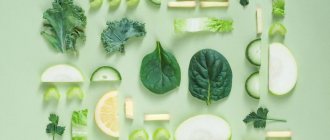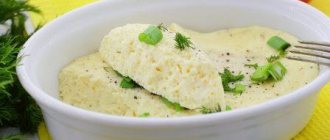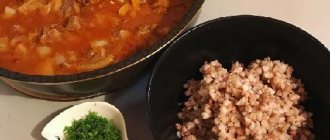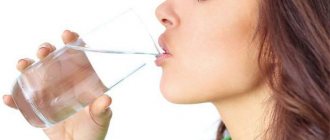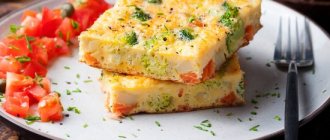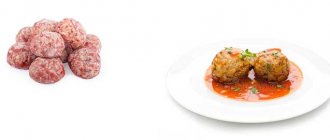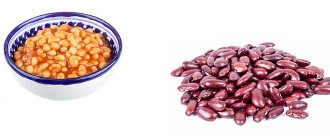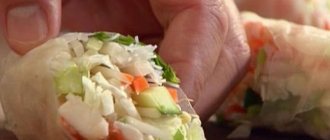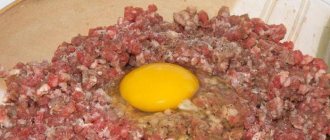Surely many people have their own favorite dishes, however, recipes rarely indicate the calorie content of the final product. And when compiling original recipes, this option is completely absent. How to improve your skills in calculating ready-made meals and preparing them for several meals in accordance with daily needs? Let's figure it out.
Often, having set foot on the path of proper nutrition and calorie counting, the menu for beginners includes cucumbers, boiled chicken fillet, buckwheat and similar simple products, because it is quite difficult to calculate the number of calories and nutrients per 100 grams of a complex dish. This is where myths about the monotony and complexity of the diet are born. In fact, only at first glance the process seems impossible. In this article you will learn:
- why it is necessary to count the calorie content of foods and how to do it;
- basic algorithms for calculating the energy value of a future dish;
- auxiliary services and specific calculation examples.
How to calculate calories in foods
At first it may seem that the counting procedure is very time-consuming and tedious. But very soon this will become a habit and will become an integral procedure when creating a daily menu, just like training in the gym or at home.
To do this, you will need two main tools - kitchen scales, which are sold in any hardware store, and tables with calorie content of foods. However, this is not enough to achieve the goal.
To build a high-quality form, the composition of the food consumed is extremely important. You can get your entire calorie intake from sweets, but everyone understands perfectly well that the quality of the body will not be the best. In this regard, it is important for the body to receive all the necessary nutrients: proteins, fats and carbohydrates.
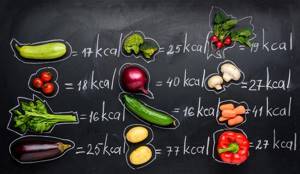
Necessary equipment
The most important step is purchasing a kitchen scale for weighing... well, now there are many of them, for different tastes and budgets. The only requirement is a convenient option - a tare reset function. Such scales will be useful to any housewife, even if she does not plan to keep track of the calorie content of her dishes.
There is no need to buy very expensive scales for pharmacists or soap makers that weigh up to a tenth of a gram; those scales that weigh with an accuracy of 1 gram .
By the way, if you are prone to scrupulous calculations, there are miniature scales that you can take with you.

I'll tell you one secret. If you eat in a cafe or restaurant, you can request a technological map of the dishes. It should exist on a par with the menu; it is an official document in any catering establishment, and the calorie content and nutrient composition: proteins, fats and carbohydrates of each dish that this establishment provides must be written there. With this simple method you can find out all the information about what you eat. Not everyone knows about this, but it exists, and you can use it too.
You will also need a sheet of paper, a pen and a program for calculating calories and nutrient balance . You can count the old fashioned way - manually, you can use Excel. Or you can choose online or a mobile application - it’s very convenient.
It is very good to use several similar programs at first, since they contain inaccuracies, errors, different interfaces, and it is important to choose the program specifically for yourself. Be sure to check the programs against product labels. Food packaged in a factory always has its own nutritional and energy value. It is this data that has the highest priority. They are more truthful than data from an online or mobile service.
At the same time, use your own hands and eyes . We are not going to count calories, proteins, fats and carbohydrates (KBJU) all our lives. Having set up your eye well, you can safely go on a visit, eat outside the home and be calm that you won’t go too overboard with the KBZHU.

Remember how much space, relative to your hand, is occupied by food of a particular consistency, how high a mound of porridge is, or how thick a chop is. This will come in handy many times in the future.
All products change volume
Due to any heat treatment during the cooking process, the products will be fried or evaporated, releasing a certain part of the nutrients and calorie content into the water. As a result, meat, vegetables, cereals, etc. will change in volume, but the calorie content will remain the same:
- cereals, pasta - increase in volume due to moisture absorption;
- poultry, meat, fish - lose moisture, decreasing in volume;
- vegetables also lose moisture and become smaller in volume.
An example with a protein product: 200 g of chicken fillet contains 226 kcal, and after boiling, the result is 150 g of boiled meat, but its calorie content remains unchanged and is 226 kcal.

Example with complex carbohydrates: 100 g of buckwheat contains 329 kcal, boil it in 200 ml of water. The cereal absorbs liquid and increases in volume, but the calorie content remains the same - 329 kcal. By increasing the proportions of water, the volume of porridge will become even larger, but the calorie content will remain unchanged.
Therefore, any product must be weighed before cooking. As a last resort, you can calculate the percentage of the portion eaten. For example, out of 100 g of buckwheat porridge cooked in water, only a third of the finished dish was consumed. To calculate a portion, you need to divide the total calorie content by 3: 329 kcal: 3 = 109.7 kcal
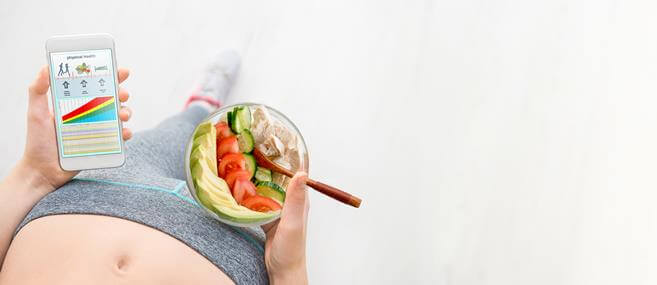
In this case, there is no need to recalculate the finished dish, because you know the amount of energy consumed and remaining.
Bodymaster.ru recommends Fitness Trainers:
The main assistant will be the formula for calculating the calorie content per 100 g of cooked dish:
A gram = B calories 100 grams = X calories
Explanation of symbols:
- A (gram) – the final weight of the prepared dish;
- B (calories) – the total calorie content of all ingredients in the composition.
To detect the unknown (X), you need to multiply the numbers located diagonally by each other, and then divide by the number that goes diagonally with the unknown:
B * 100: A = calorie data per 100 g of finished dish
Calorie counting using services
There are a number of popular services that can calculate the calorie content and KBJU of ready-made dishes for you. And, unfortunately, each counter has a drawback: the program does an excellent job of taking into account the final weight, calories and nutrients, but does not take into account the thermal methods of processing foods. As a result, the data will be less accurate than manual calculations.
One way or another, a special application or program does an excellent job of counting KBJU products and all recipe ingredients; you can download it for free for any phone system.
FatSecret
There is another way to quickly and easily calculate the amount of proteins, fats and carbohydrates in a finished dish - this is the FatSecret application. The program also tracks achievements and teaches you how to create a balanced diet. It is possible to enter missing products and record recipes.
The daily menu is very conveniently divided into several meals: breakfast, lunch, dinner and snacks. In the appropriate window, enter the data of the selected products:

The program does all the calculations for you, analyzing the number of calories and BJU not only in general, you will also see the amount of energy consumed for breakfast, lunch, dinner or snack. At the very bottom of the daily diet table you can see a summary diagram for the day, which is extremely convenient for building a nutrition plan for a specific goal, be it losing weight, gaining muscle mass, or maintaining weight.
Do not forget that the program calculates the calorie content of foods in a single quantity based on the approximate weight of the ingredient, but not the exact one. One cucumber can weigh 100 g or 150 g. Therefore, it is recommended to enter the data yourself after preliminary weighing.
Exactly the same principle must be followed when working with mobile applications, entering the amount of food in grams yourself.
Other mobile applications
Diary Nutrition is a free food diary with a simple interface. The main feature is the ability to specify the exact time of eating.
Lifesum – in the program you can specify a goal (losing weight or gaining muscle mass), after which the application can independently calculate the required amount of calories especially for you, and also recommend a diet in accordance with your tastes. There is a built-in water tracker and the ability to synchronize with other programs to track achievements. The program also evaluates your success using a special scale.
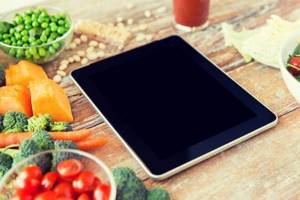
Yazio is a convenient calorie calculator that analyzes information about foods consumed and physical activity for the month, forming the data into a graph.
MyFitnessPal is a high-quality development that is popular all over the world. The database contains about 6 million products, which is updated daily. The program is considered the best calorie counter for Android.
How to calculate the calorie content of a dish with one or more ingredients
So, we decided on the scales, we decided on the eye, we chose the program, i.e. we used many programs.
Now let's decide on the recipe and method of preparing the dish.
First, we weigh the raw products (each product separately) that we will add according to the recipe and write down this data.
Let it be 300 grams of meat, 50 grams of carrots, 700 grams of potatoes, 30 grams of garlic, 5 grams of dry dill and basil, and 10 grams of chili pepper.
Only 1100 grams, total calorie content 1198 kcal.

Then we weigh the container in which we will cook (let it be 600 grams), and write down this data.
We prepare the dish according to the chosen recipe. Naturally, we don’t add anything else there. We do not take salt and water into account.
The dish is ready, that is, the water will no longer evaporate, and we won’t add anything either.
We weigh everything - both the dishes and the dish in it (let's say it turns out to be 2000 grams).
Subtract the mass of the dishes . We remember that our pan weighed 600 grams. So, subtract 600 grams, and we have 1400 grams of ready-made stew in this pan.
Now we have 2 ways. When we add raw foods, we already know their calorie content and the ratio of proteins, fats and carbohydrates. After cooking, nothing changes, just the contents of the pan will either decrease in weight if it is, for example, meat, or increase if it is porridge or stew. But the number of calories will remain the same.
In our case, the contents of the pan increased in weight by 300g (we added water). Caloric intake remained the same - 1198 kcal.
The first way is the most universal. We're just doing the math: 1,400 grams of stew contains the same amount of calories as 1,100 grams of raw food. And we can already know how many calories are in our stew:
1198 kcal / 1400 grams * 100 = 85.6 kcal per 100 grams of stew
No secrets. In the same way, we recalculate the cost of products purchased at the market. Only instead of the price we put calorie content and calculate per 100, not per 1000 grams.
The second way is magical

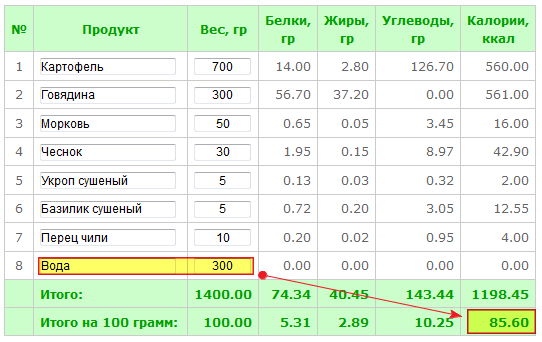
As a rule, over time, each housewife collects her own proven recipes. That is, having calculated this or that recipe once, next time we can not do this, but use the available numbers.
Two mistakes when calculating calories
- Error in calorizer data.
Very often in programs the amount of weight of the product according to the recipe is indicated in pieces, spoons, glasses, etc. Such indicators make the calculation of the calorie content of a dish approximate, since it is impossible to know exactly the exact number of calories due to the uneven weight or fat content of the products in the author’s recipe and in your interpretation. Therefore, it is better to ignore such information and enter only your own numbers in the program or nutrition diary.
- Taking a sample.
It is not recommended to test a dish for the amount of salt during the cooking process and, in principle, before the final weighing. Otherwise, it will simply not be possible to make an accurate calculation. You can also add salt to the dish in a separate plate.
Examples of calculations
Basic principles on how to correctly count calories in complex dishes to lose weight, maintain weight, or gain muscle mass:
- all products are weighed in dry/wet form;
- We count the KBJU of each ingredient;
- The data obtained is added up - this will become the total calorie content of the recipe.
We suggest looking at the example of such a complex dish as oatmeal with milk, honey and butter .
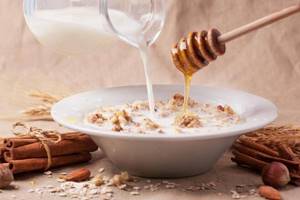
Ingredients:
- oatmeal – 130 g;
- milk 3.2% - 50 ml;
- honey – 30 g;
- butter 82.5% – 10 g.
The process of calculating calories for a complex dish:
- We multiply the indicators per 100 grams by the required portion of the product.
- Let's sum up the KBJU ingredients.
| Ingredients/KBJU | Calories | Squirrels | Fats | Carbohydrates |
| Oat groats | 444,6 | 15,99 | 7,93 | 77,35 |
| Milk 3.2% | 29,5 | 1,45 | 1,6 | 2,35 |
| Honey | 98,7 | 0,24 | 0 | 24,45 |
| Butter 82.5% | 74,8 | 0,05 | 8,25 | 0,08 |
| TOTAL | 647,6 | 17,73 | 17,78 | 104,23 |
For the whole mess we get: K-647.6; B-17.73; F-17.78; U-104.23.
Simple dishes porridge
First of all, it is necessary to calculate the calorie content of a man’s daily diet, which will differ from a woman’s daily needs, and also to know how to select the right ingredients and learn to count calories so that the process of losing, gaining or maintaining weight is effective and without harm to health. Therefore, we continue to practice and learn to do calculations on simple dishes. This time it will be rice porridge .
Ingredients:
- rice – 300 g;
- water – 900 ml;
- salt - to taste.
Calculations:
- There are 330 calories per 100 g of raw rice.
- For the recipe you will need 300 g of cereal: 330 kcal * 3 = 990 kcal. This is the final calorie content of the dish, because... the remaining ingredients do not contain energy value.
- Let’s assume that after cooking the weight of the dish was 900 g. Now we calculate the calorie content of the product per 100 grams:
900 g of rice porridge = 990 kcal 100 g of rice porridge = ? kcal (990 * 100) / 900 = 110 kcal
Total : 100 g of ready-made rice porridge contains 110 calories.
This algorithm will be similar for the process of calculating any other cereals, pasta, legumes, etc. First, we weigh the dry product and make a calculation, then we cook it, drain the water and calculate the energy value per 100 grams.
Complex dishes: puree soup and apple mousse
And now the practice is more complex - puree pumpkin soup.
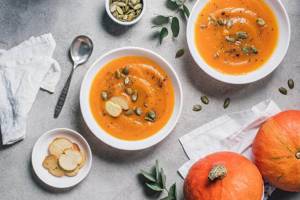
For clarity and your convenience, a table with summarized data is presented.
| Ingredients | Recipe ingredient weight | Calorie content per 100 g | Calorie weight of ingredient according to recipe |
| Milk 3.5% | 1 l (1000 ml) | 61 * 10 kcal | 610 kcal |
| Potato | 700 g | 80 * 7 kcal | 560 kcal |
| Pumpkin | 700 g | 25 * 7 kcal | 175 kcal |
| Onion | 150 g | 41 * 1.5 kcal | 61.5 kcal |
| Carrot | 100 g | 37 * 1 kcal | 37 kcal |
| Butter 82.5% | 25 g | 748 * 0.35 kcal | 187 kcal |
| Salt | taste | 0 kcal | 0 kcal |
| Total: | 2675 g | — | 1630.5 kcal |
the total weight of all ingredients for the soup is 2675 g; the final calorie content of the dish is 1630.5 kcal.
Cooking method:
- Fry finely chopped onion in butter in a large saucepan, then add carrots cut into thin cubes.
- Peel the potatoes and pumpkin, rinse, cut into medium pieces and add to the vegetables. Pour milk and add salt to taste.
- Bring everything to a boil, then reduce heat and simmer for 30-40 minutes.
- Beat the prepared vegetables with an immersion blender.
When finished, the soup weighs 2562 g. We remind you that during the heat treatment process only water evaporates, and the calories remain in place! Next, you need to subtract the calorie content of the soup per 100 grams using the formula:
2562 g pumpkin soup = 1630.5 kcal 100 g pumpkin soup = ? kcal (1630.5 * 100) / 2562 = 63.6 kcal
Total : 100 g of ready-made pumpkin soup contains 63.6 calories.
Well, where would we be without dessert? Those with a sweet tooth will appreciate this airy apple-protein mousse with a hint of cinnamon .
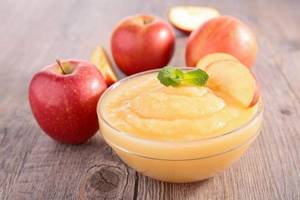
| Ingredients | Recipe ingredient weight | Calorie content per 100 g | Calorie weight of ingredient according to recipe |
| Apples (peeled and seeded) | 500 g | 37 kcal | 185 kcal |
| Water | 150 ml | 0 kcal | 0 kcal |
| Sweetener | 60 g | 379 kcal | 227.4 kcal |
| Egg white | 2 pcs. (70 g) | 45 kcal | 31.5 kcal |
| Gelatin | 10 g | 355 kcal | 35.5 kcal |
| Total: | 790 g | — | 479.4 kcal |
the total weight of all ingredients for the mousse is 790 g; total calorie content – 479.4 kcal.
Cooking method:
- Wash the apples, peel and core them and cut into quarters.
- Place in a baking dish, adding 2 tablespoons of water, cover tightly with foil on top and place in an oven preheated to 180 degrees for 25-30 minutes until soft. Cool.
- Dilute gelatin in water according to the instructions, heat to 40-50 degrees and cool.
- Puree the finished apples using an immersion blender, add sugar and beat with a whisk or a special mixer attachment for one minute.
- While whisking continuously, add the egg whites to the apple mixture and beat for at least another 5 minutes. The mass will turn white and increase in volume.
- Gently add gelatin and beat for another minute.
- Pour the resulting mass into bowls or bowls and place in the refrigerator for 3 hours. It is recommended to sprinkle with cinnamon before serving.
When finished, the dessert weighs 675 g. We calculate the calorie content per 100 grams according to the formula:
675 g mousse = 479.4 kcal 100 g mousse = ? kcal (479.4 * 100) / 675 = 71 kcal
Total : 100 g of finished apple mousse contains 71 calories.
Fry cutlets, chops and meat in batter
When a product is fried in oil, 20% of its amount is absorbed by the product, be it a cutlet or a chop. And in the case of all vegetables or flour products, absorption reaches almost 100%. This primarily applies to pancakes, pancakes and eggplants due to their spongy texture. Therefore, all added fats during the cooking process must also be taken into account in the overall calculations of the dish.
Let's look at the example of fried chicken fillet .
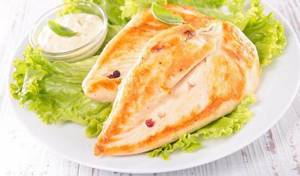
| Ingredients | Recipe ingredient weight | Calorie content per 100 g | Calorie weight of ingredient according to recipe |
| Chicken breast fillet | 500 g | 116 kcal | 580 kcal |
| Lemon juice | 50 ml | 16 kcal | 8 kcal |
| Vegetable oil | 100 ml | 900 kcal – 20%* | 180 kcal |
| Salt pepper | taste | — | — |
| Total: | 650 g | — | 768 kcal |
* 20% is the percentage that is absorbed into the chicken meat during the frying process, which is 180 kcal. There will be some remaining oil in the pan.
total weight of all ingredients – 650 g; total calorie content – 768 kcal.
Cooking method:
- The fillet must be cut lengthwise into two equal parts and beaten.
- Rub the chop evenly with salt and spices to taste, sprinkle with lemon juice, and leave to marinate for 30 minutes.
- Pour oil into a frying pan and heat. Fry the fillet until golden brown on both sides.
When finished, fried fillet weighs approximately 400 g. We calculate the calorie content per 100 grams according to the formula:
400 g fillet = 768 kcal 100 g fillet = ? kcal (768 * 100) / 400 = 192 kcal
Total : 100 g of fried chicken fillet contains 192 calories.
When meat is cooked in batter, the BPJU of the batter is added to the data of the meat and butter.
How many calories are in broth and compote?
When the broth is cooked, part of the calories of the main ingredient goes into it:
- 15% from fish;
- 20% from meat;
- 30% from fruits;
- 20% from dumplings, khinkali, manti.
The percentage will vary depending on the cooking time.
salmon broth as an example
- salmon steak 300 g;
- water 1 l.
100 g salmon – 142 kcal, 300 g = 426 kcal (142 * 3) 426 kcal – 15% = 63.9 (rounded to 64)
Total : 1 liter of salmon fish broth contains 64 calories, and 100 ml - 6.4 kcal.
Boiled meat and vegetables
To determine the calorie content of boiled/baked/steamed any type of meat or vegetables, you need to weigh the ingredient before cooking it.
boiled beef as an example .
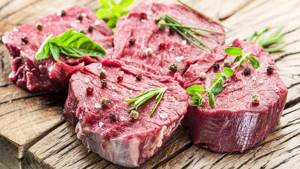
During the cooking process, 20% of the calorie content of meat goes into the broth.
Ingredients:
- beef, boneless shoulder – 1 kg;
- salt to taste.
100 g of shoulder blade – 208 kcal, 1 kg – 2080 kcal (208 * 10)
The weight of boiled meat is approximately 700 g, because... decreases with heat treatment. Also, 20% of the calories came from the broth. Hence:
2080 kcal – 20% = 416 kcal boiled into broth; 1664 kcal – the total calorie content of all meat.
We calculate the calorie content of boiled beef per 100 grams according to the formula:
700 g boiled meat = 1664 kcal 100 g boiled meat = ? kcal (1664 * 100) / 700 = 237.7 kcal
Total : 100 g of boiled beef contains 237.7 calories.
We calculate the calorie content of the finished dish ourselves
For some reason, you do not have the opportunity to use applications or websites and calculate the calorie content of the finished dish. What to do in such a situation?
Let's learn the art of calorie counting. For this you definitely need a kitchen scale. The more accurate your scales on which you weigh food are, the more opportunities you have. Use accurate electronic kitchen scales!
Calculation No1 – Soup
If you are going to cook soup, then prepare the necessary ingredients, weigh them and count the calories in them:

- Beef broth 1.5 liters – 75 kcal;
- Potatoes 150 g – 180 kcal;
- Fresh carrots 150 g – 45 kcal;
- Cauliflower 250 g – 75 kcal;
- Dill, parsley, onion 100 g - 20 kcal;
- Green peas (fresh) 200 g – 150 kcal;
- Salt – 0 kcal; TOTAL: 2350 g 545 kcal
Before you start cooking, weigh the pan, and after cooking, weigh the soup again (minus the weight of the pan). It turns out 1930 ml of soup (during the cooking process the liquid evaporates and the concentration increases) with a calorie content of 545 kcal. To find out the calorie content of 100 g of soup, we make up the proportion: 100*545/1930=28.2 kcal.
Calculation No2 – Zucchini caviar
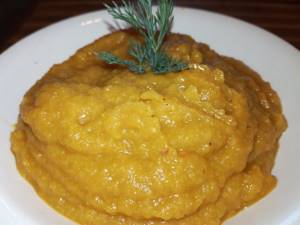
- Zucchini 1 kg – 250 kcal;
- Sunflower oil (glass) 230 g – 2133 kcal;
- Tomatoes 1 kg – 200 kcal;
- Onions 1 kg – 400 kcal; TOTAL: 3230 g 2938 kcal
Due to the evaporation of moisture from the food, the weight of the finished dish is 2850 g. Calculation per 100 g: 2938*100/2850=103 kcal.
Calculation No3 – Freshly prepared natural juice
- 750 g of juice is obtained from 1 kg of raspberries
We make up the proportion and get: In 100 g 750*100/1000=75 kcal. If you add sugar, you need to count it extra!

Calculation No4 – Compote
- Apples 1 kg – 300 kcal;
- Apricots 1 kg – 450 kcal TOTAL: 2000 g 750 kcal
This is the amount of fruit per 5 liters of compote. 5000 g – 750 kcal 100 g – 15 kcal
The calculation is based on production without sugar. If you use sugar, count extra.
Calculation coefficients for products prepared by methods other than boiling
- For salted products (herring, sprat, etc.) *1.3
- For dried products *1.6
- For smoked products *1.7
- For fried foods *1.5
- For canned tomato *1.0
- For canned food with added oil *1.3
- For canned food in its own juice *1.0
- For canned oil *2.8
- Fish balyk *2.0

